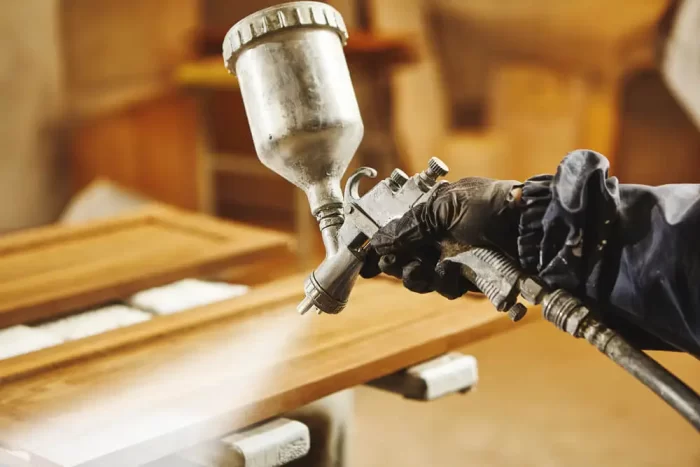Can You Spray Paint Wood? Latest Ideas 2024
Do you want to paint your wooden furniture but don’t have much time on your hands? But you are wondering Can You Spray Paint Wood? to achieve even coverage without going through the hassle of paint brushes?
The answer is “Yes”. It is possible to spray paint the wood without even the need to use a paintbrush. But there is one thing you must do before starting to paint wood. You have to make sure that you are using quality spray paint so you can get smooth finishing on your furniture.
To know the brief explanation of “Can Wood Be Spray Painted?” and “What is the Process of Spray Paint for Wood?” You have to dig deeper into the article until the very end.
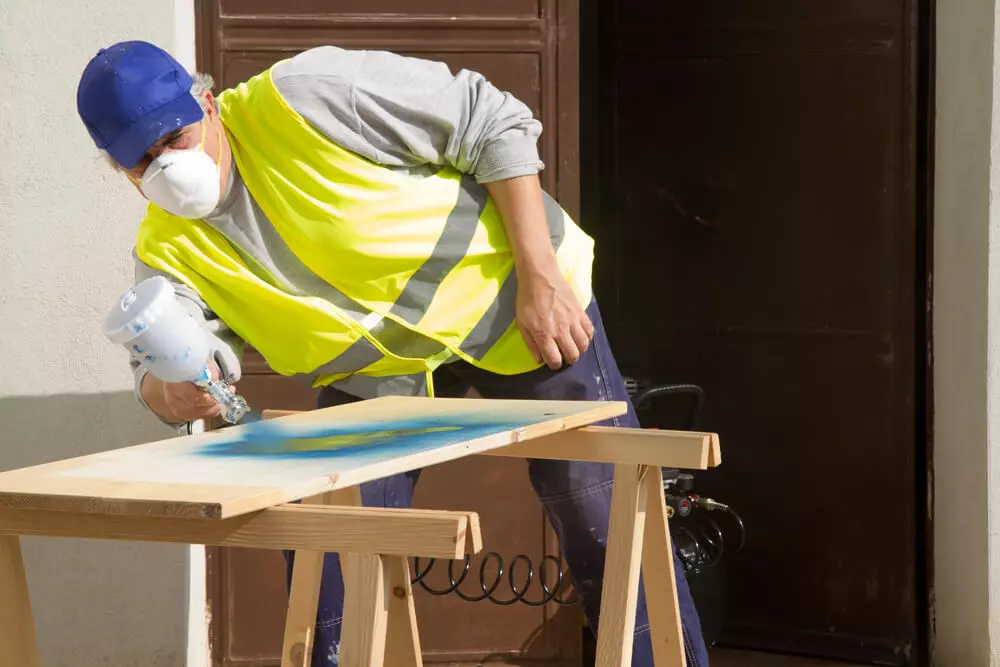
Can You Spray Paint Wood and Wood Furniture?
Although it is possible to spray paint wood, there are still some precautions you must take before starting out the process. First of all, you need to prep the wood. Unprepped wood will get stained by spray paint, so it is necessary to prime the wood before using any kind of spray paint.
If you use spray paint on untreated wood, it will result in the peeling of spray paint on the wood, or you might have to face some other problems in the future.
Which is the Ideal Weather for Spray Paint?
The mid-season is ideal for spray paint, in which the humidity level is around about 80 percent. And the suitable temperatures for painting are 50F and 90F. Don’t paint the wood under the sunlight to avoid problems.
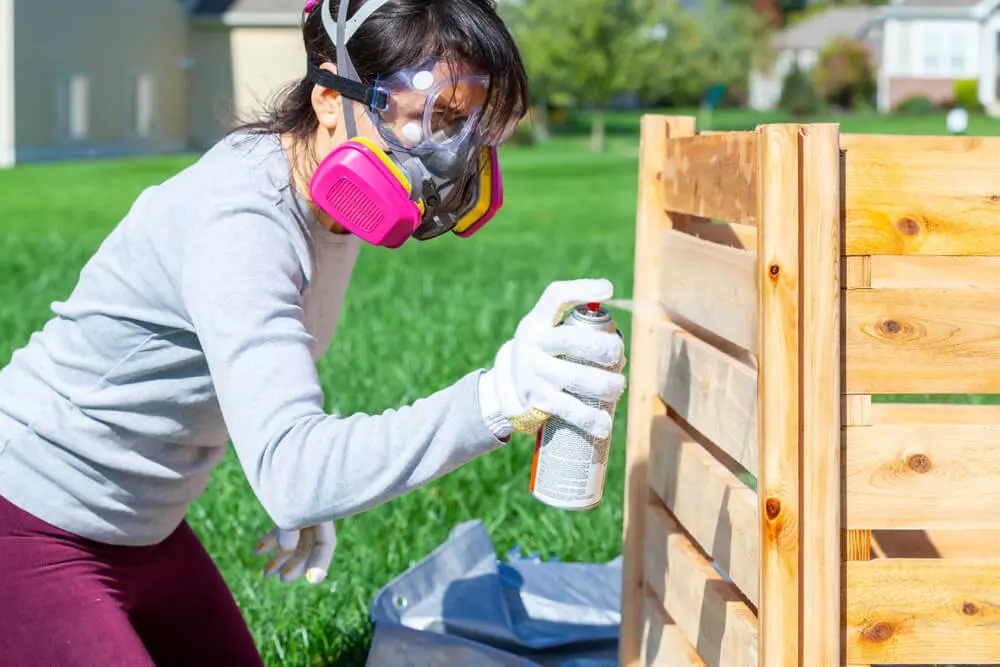
What is the Process of Spray Paint Wood?
Before starting the spray paint wood, you need to follow these steps, which I have mentioned below in detail.
- Sanding
- Priming
- Spray Paint
1) Sanding
Sanding is the process that is used to smooth the surface of the wood. When you hear the word sanding, you might think that you are using sand in this process, but this is not the case here.
In this step, I will be dealing with senders or sandpapers to easily cover the scratches and rough areas of wood which is essential to initiate the process of spray painting wood.
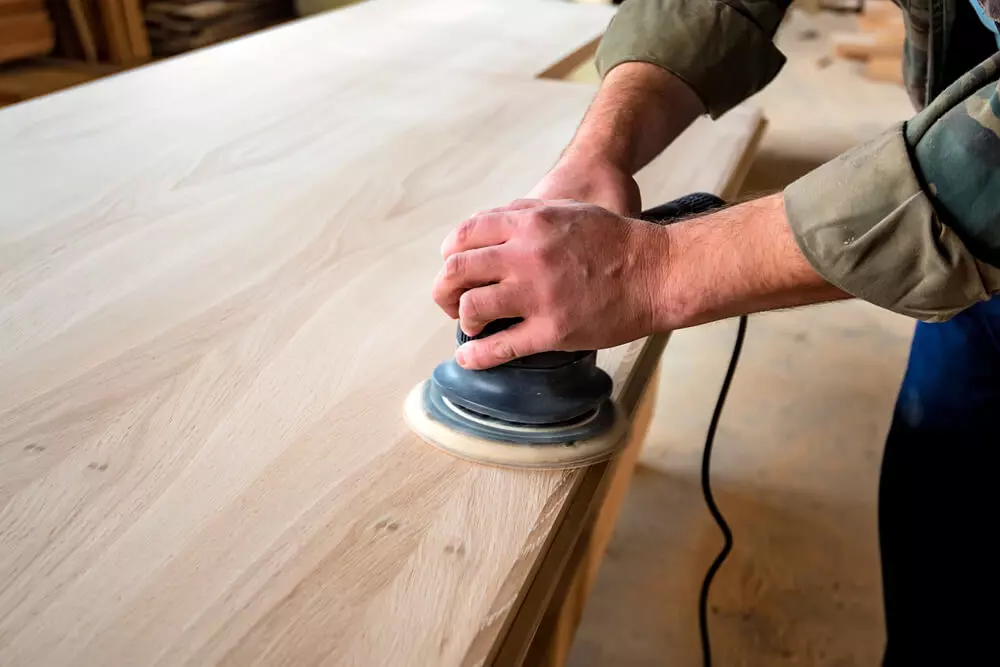
Why Sanding the Wood Necessary Before Spray Paint?
Before doing spray paint on the wood, you should check that the wood isn’t peeled off, bubbled, or uneven. If the wood is having any kind of such issues sanding the wood is crucial before spray paint.
Below are the steps you need to do sanding on the wood:
I) Size of Grit:
Sanding is best to balance uneven wood surfaces; the main element you would need to sand the wood is grit. Grits are available in the market with different levels, and you have to choose the one required according to your wood.
Suppose the wood has got heavier unexpected wood than you should use 40 to 50 grits. But If the wood has a less rough surface, then you should go with 60 to 100 grits. When you only need smooth finishing on wood, then the 120 to 220 range is ideal.
ii) How to use Grit for Sanding?
At first, you need to even the wider scratches or holes of the wood with the lowest grit. After that, you can use the highest grit to cover the less affected area. In my experience, If you start with the highest grit, the result will be disappointing, and you wouldn’t be able to smooth the heavy scratches.
iii) Again, Check the Wood:
To cross-check whether the wood is plain or not, you need to pour water on the wood, and the wet wood will show an uneven surface immediately. Now it depends on you to select the grit’s level according to the marks that appeared on the wood.
iv) Clean the Mess:
After completing the whole process of sanding, you need to clean the mess. It is recommended to use a sticky cloth for cleaning the wood. When you remove all the little particles from the wood, you will get a flat surface.
What Happens When I Don’t Sand Before Painting?
If the wood is bare, bumpy, and stained and you paint it without sanding, then you will get negative results such as bubbling, uneven finishing, and chipping. To avoid these problems, you need to follow the process of sanding on rough wood
.Wood spray paint can be directly applied if the wood isn’t bare or affected, so in this case, preparation is not necessary at all.
2) Priming
After sanding, you need to prime the wood to cover the pores and the uneven area to ensure the longevity of spray paint. As if you start spraying paint on wood without priming, then you will not be able to cover the bubbles, cracks, and marks from the wood.
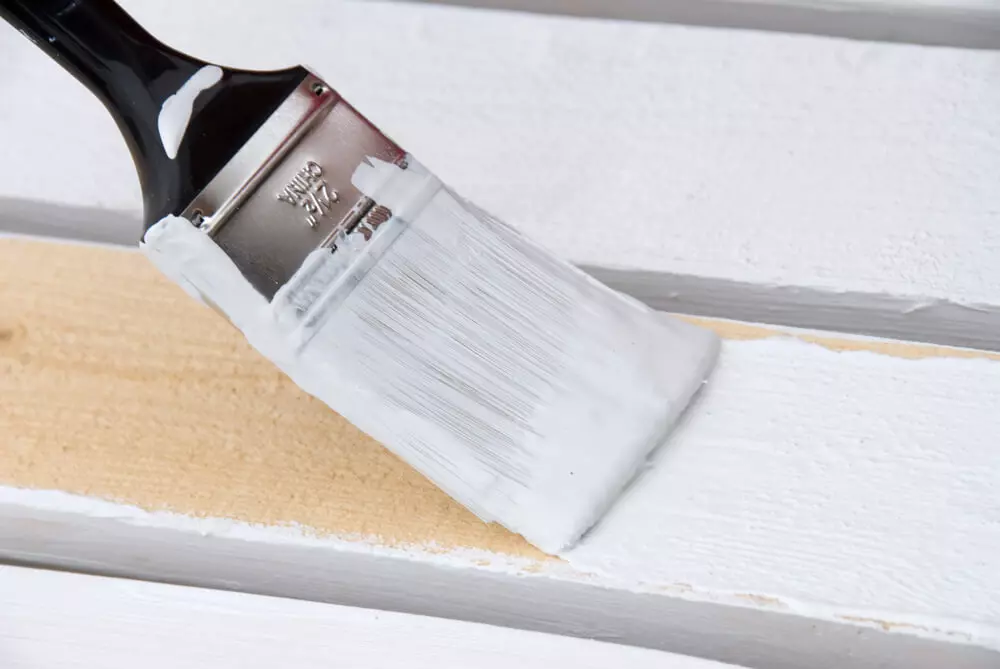
What Kind of Primer Do I Need to Use on Wood?
The right choice of primer is one of the most important things that will give the quality you require for smooth finishing for spray-painted wood.
Let’s suppose you have got stained wood. In that case, you have to opt for high-quality oil-based or latex primers. But if this is not the case and your wood is stained, then you have to go with a stain-blocking primer.
What Happens If I Paint Wood Without Primer?
Priming the wood is necessary when the wood doesn’t look smooth, flat, and even. But there are also some conditions in which you don’t need to prime the wood, and the conditions are the following:
I) If No Imperfection Is Found:
Suppose the wood is in a good state and has no imperfections, then priming is not essential at all. You can directly apply the paint on the stainless wood without prep and will get a smooth, fine, and perfect finish.
ii) If The Spray Paint Match with the Color of Wood:
Now come to the second case; if the wood is stainless and its color is the same as the spray paint you are going to use, then avoid the primer.
3) Now Spray Paint the Wood:
When you are done with sanding and priming, it’s time to spray paint on the finished wood. All you need to do is grab the spray paint bottle in your hand and shake it properly before using it. After that, start spraying on the wood.

Don’t press the nozzle of spray too longer to spray on the same area, as doing this will spoil your spray paint as well as your hard work. Keep the distance between your spray paint nozzle and wood at least 8 to 10 inches.
Now give the first coat to the wood and leave it for minutes, and when it gets dry properly, then re-coat. When you give proper time to each coat, you will get a better result.
Can I Fix the Uneven Surface after Spray Paint?
Stop worrying because, after spray paint, you can fix the uneven area of wood easily. To cover the stains, you need to sand the affected area until you are completely satisfied that the stains are no more.
After that, apply the first coat of spray paint on the wood and let it dry, then apply another coat. To get smooth finishing, let the paint dry after each coat.
How to Seal Spray Paint on Wood?
Sealant is the process in which you can lock the paint, and it’s your choice to use sealant or not. If you want to do so, then have a look at these steps:
I) Select the Perfect Sealant:
It is recommended to choose the sealant of the same brand from which you purchased the spray paint. If you use the local sealant, then the result will not be as effective as it is supposed to be.
ii) Take Precautions:
You need to take precautionary measures to protect your lungs, eyes, and even your hands, as the sealant process can harm them badly.
iii) Apply Longer Strokes:
You have to keep your strokes longer to get an even finish, as small strokes will lead to an uneven surface.
iv) Leave it to Dry:
When you are done with sealing spray paint on wood, then it’s time to leave it to dry as per the required period. It is best to let it dry for longer to get amazing results.
Hands, as the sealant process can harm them badly.
v) Apply Longer Strokes:
You have to keep your strokes longer to get an even finish, as small strokes will lead to an uneven surface.
Which Type of Spray Paints Are Used for Wood?
It is recommended to use water-based spray paints on indoor wood because these sprays contain fewer chemicals. Water-based spray paints will not damage the color of the wood.
The most interesting thing about these water-based spray paint is that it takes little to no time to get dry. It means you don’t need to wait longer to re-coat so you can complete your paint in the ideal time.
If you are spray painting outdoors then water-based spray paints are not a good choice. The best option for outdoor wood is oil-based spray paints, and these sprays are manufactured with chemicals that allow the wood to survive in an outer environment without getting damaged.
You can choose the various spray paint colors for the wood. A variety of colors are available in the market, so you don’t have to confuse over choosing between two or three.
You can choose wood finishing, including matte, satin, and gloss, as per your liking. There are also several various types of spray paints available out there, including water-based or oil-based spray paints. Some of them are used for general purposes, while others work best for a velvety look.
Which is the Best Wood Spray Paint for Home Furniture?
When it comes to doing paint on furniture, then you should go with the long-lasting spray paint that will extend the durability of the paint and also it will give an attractive look to your furniture.
The best spray paints for finished wood are Color Place Spray Paint, Behr Spray Paint, Krylon Fusion Spray Paint, and 123 primer spray paint.
How Much Spray Cans Used to Paint?
First of all, you need to measure the wood, and then you will get to know how many cans are enough for you. If the spray Paint ran out during the work, it would be really disturbing.
The quantity of the spray is mentioned on the back side of the spray, so purchase the cans according to the size of your wood.
Can You Spray Paint Over Stained Wood?
There is nothing wrong with spraying paint over stained wood, but you must have to choose the best possible way to do so. And as I have mentioned before, to spray paint the stained wood, you need to use a stain-blocking primer.
But if you don’t go with the required technique, your wood may end up with stains that will make your wood left with uneven finishing.
Can You Paint Over Varnished Furniture?
Spray Paint over varnished furniture is only possible when you follow the right method as furniture has a glossy surface, so first, you should use the right sandpaper to de-gloss the varnished furniture.
When you are done with sanding, prime all the sanded areas properly and let them dry. When the primer gets dry its mean, your furniture is all prep for spray paint.
Can I Spray Paint on Metal Furniture?
You can spray paint on metal furniture by using high-quality enamel Paint. In the beginning, use sanders and a metal brush to flatten the surface. Once the sanding job is done, use a wet fiber cloth to remove all the dust particles.
When you see the metal is dry, then give coats of primer, which is recommended for metal. After 1 to 2 hours, pick the spray paint and shake the paint bottle well, then start painting on the furniture. Now give 24 hours to the furniture, then it will get ready to use.
Can I Spray Paint on Plastic Furniture?
It is possible to use spray paint on plastic furniture. The spray paints that are formulated for plastic are available in the market, so if you want to paint your plastic chair or table, then follow the below-mentioned method.
The plastic chair doesn’t need sanding and priming, so the first step you need to do is clean the chair with water and then soak the water with a dry cloth. When the plastic chair looks dry, then start spraying the paint on it.
The paint will efficiently stick to the furniture, and within a few hours, it will look beautiful and new.
Pro Sprayers:
If you are expecting professional finishing of paints on wood or furniture, then you should go with pro sprayers. Let’s dig into the two types of professional sprayers.
HVLP:
HVLP comes with two chambers, one is a paint container, and the other one is for air pressure. Paint comes out from the nozzle with high pressure of air, and it provides smooth and beautiful finishing to the wood.
Airless Sprayers:
If you are short on time and want to avoid the hassle of filling up the bottle again and again, then it is recommended to go with airless sprayers. These are portable paint sprayers, so you can easily bring them with you.
Electric and gas airless sprayers are available in the market, so you can purchase them according to your needs. But when I talk about quality finishing, the HVLP is better than airless sprayers.
Conclusion:
Now you must have got your answer Can You Spray Paint Wood? as I mentioned above, you can spray paint on wood, but for smooth and even finishing, the wood needs to be prepared and primed perfectly.
But before priming, sanding wood is as important as priming. And in the very end, you need to choose the best sealant to seal your spray Paint on the wood perfectly.
So gather all the required equipment now before starting the process and then be ready to have beautifully painted wood.

